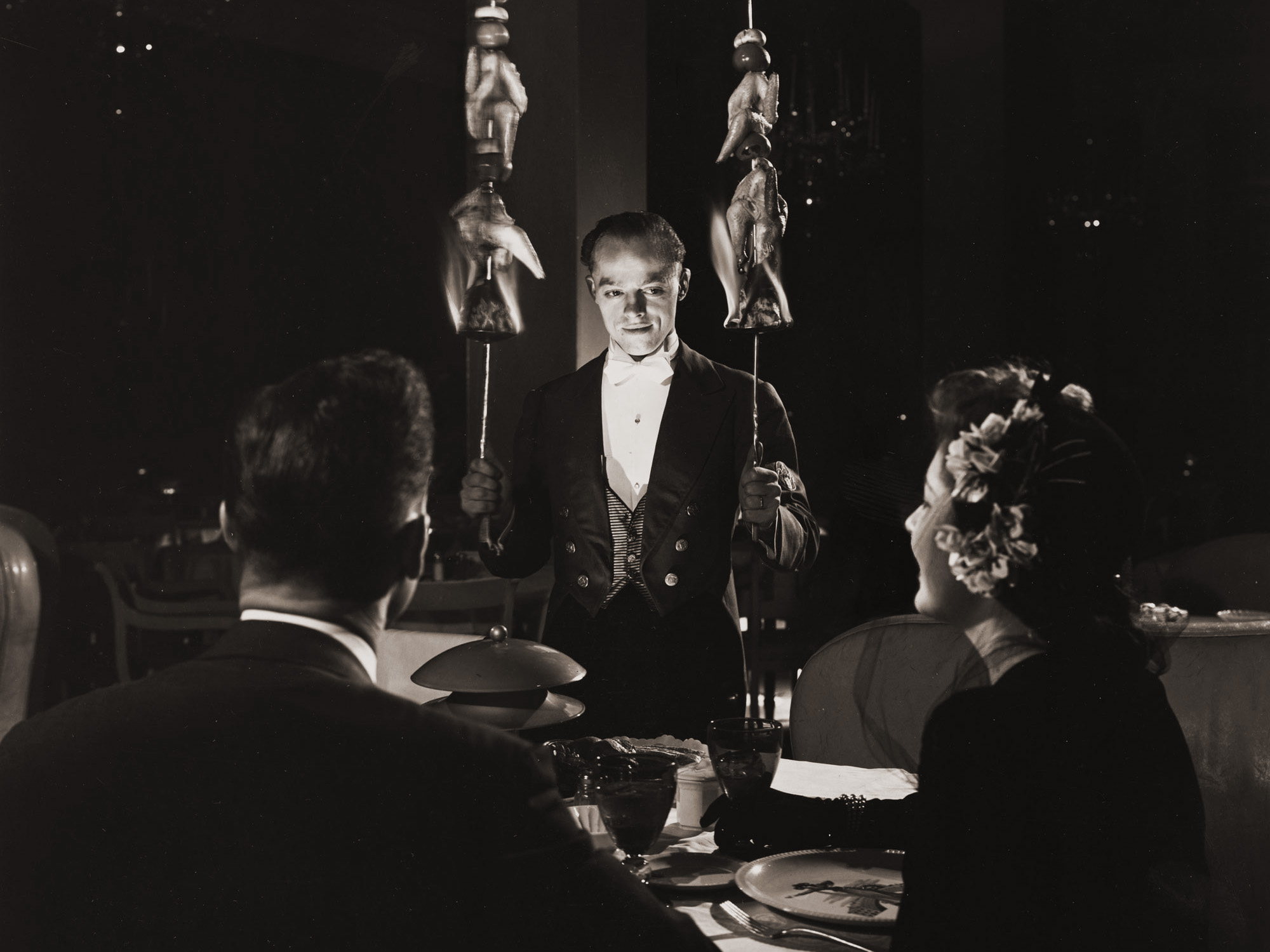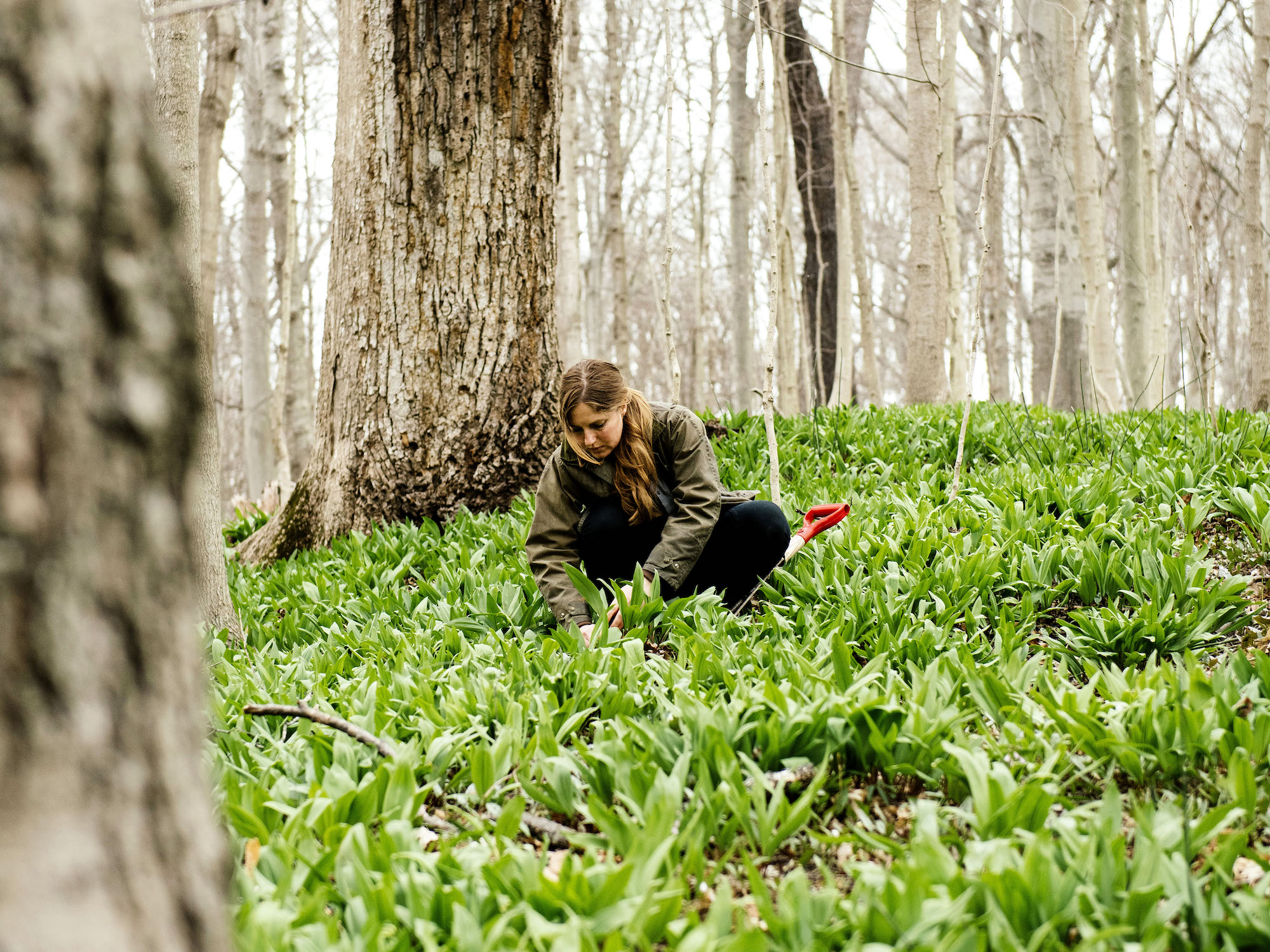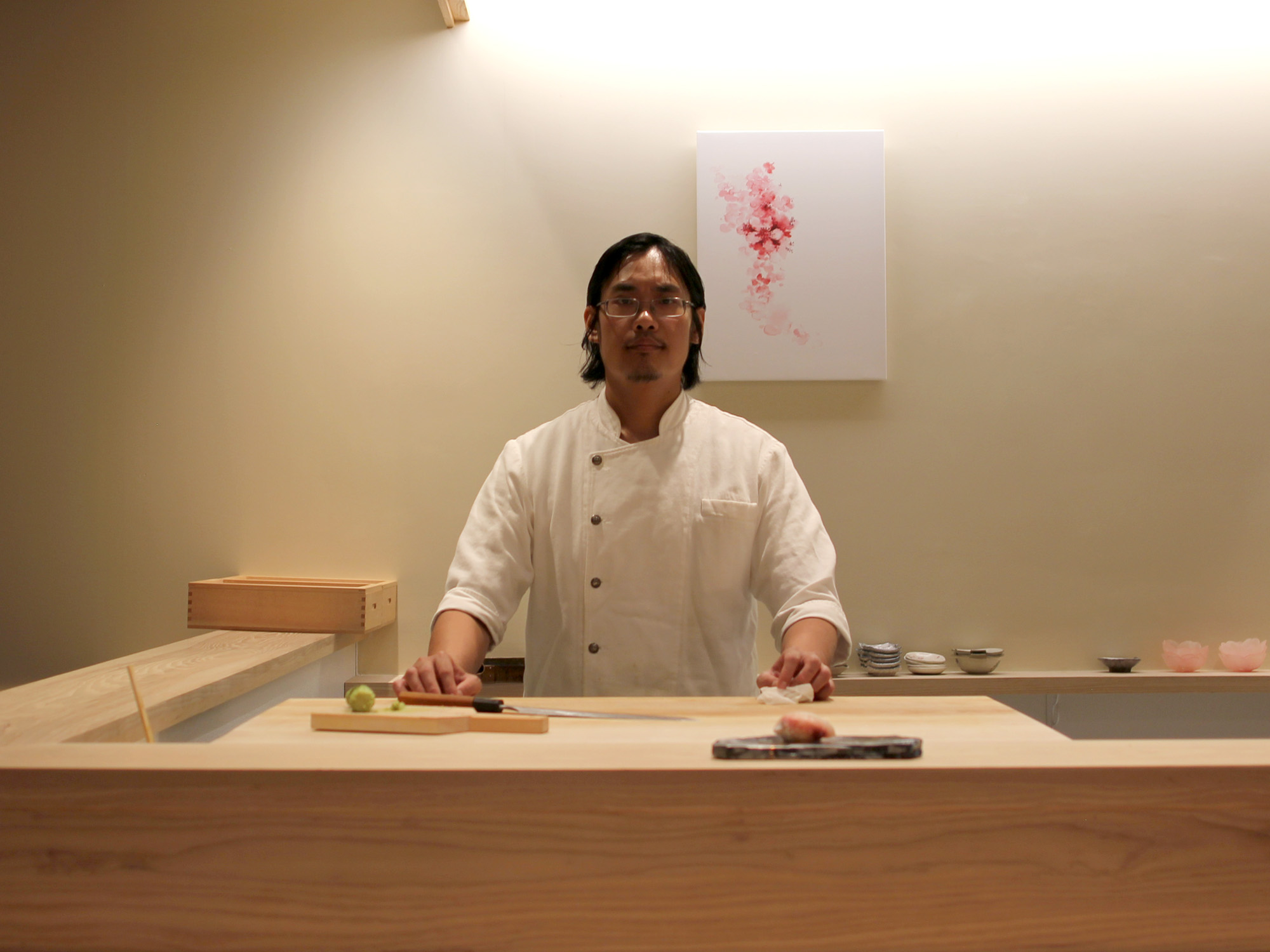B.K. PARK IS DRESSED NOT IN THE AUSTERE GRAY JACKET he wears when serving sushi at Mako, but in the logo-bedecked workout clothes of his other passion—soccer. We have about an hour to talk before he needs to head north for practice. (You can’t say it doesn’t keep him trim.)
He and I talked recently for this piece on high-end tasting menu restaurants—by my count, Mako, which opened in March, is the 9th most expensive tasting menu in town—and we’ve already covered how Mako came to be. He wanted to offer the personalized attention of an omakase restaurant, not least because it would be new to Chicago, but by the time Mako opened, he found himself fourth in a hot trend of new high-end omakase restaurants (behind Kyōten, Omakase Yume and Omakase Takeya). Which he’s nevertheless glad to see, because every omakase should be a unique reflection of that chef’s experience and tastes, and the more we have, the more people will appreciate what the form and each chef offers, he says.
In Mako’s case, the character of the experience is partly a slightly bigger and more handsomely designed room; besides bar seating, it offers a small group of tables facing the bar, which let you enjoy seeing the chef at work while allowing a couple a more intimate setting for themselves. But it’s also Park’s arrangement of the courses, which aims to blend nigiri courses with cooked dishes throughout the meal harmoniously, and to reflect his experiences and background as a Korean-born chef of Japanese cuisine.
I asked Park to tell me about some of the courses on his 13-course (many more individual items) menu—how he came up with them, what they mean to him, why they fall where they do in the progression of dishes. He had just had photographs done of everything on the menu by Brad Danner, so for maximum vicarious pleasure, start by blowing up the slideshow below to full screen size (click on the two-way arrow), and then go through the text and photos below to find out what each course is about.
Gallery: Omakase offerings at Mako
Photos by Brad Danner
1. Ankimo/King Crab/Abalone
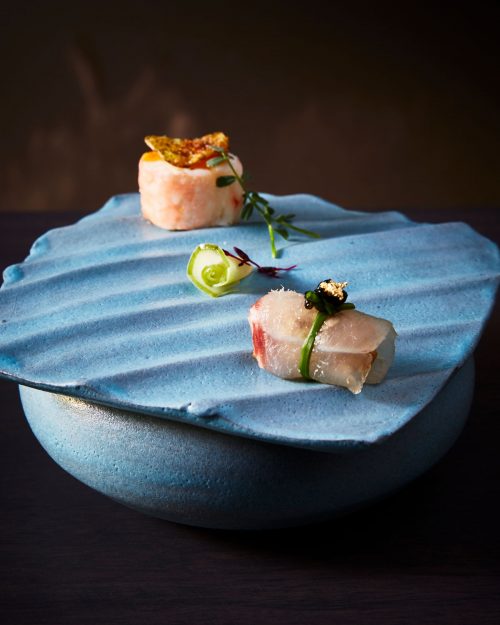
As the omakase begins, you see three small items—canapes, really—which you are told to eat from bottom to top. So your first taste is monkfish liver wrapped with a slice of fluke fin and topped with a dollop of osetra caviar and a sparkle of gold leaf. Park says, “I want you to have something inspiring, something surprising, at the beginning. The monkfish ‘foie gras’ has a really rich flavor, but it’s very different from regular foie gras. I tried making it from fluke liver and red snapper liver, too, but the monkfish has a deeper flavor.”
Pickled chayote, topped with a micro-pea leaf, serves as a palate cleanser, and then another rich bite: a lump of king crab spread with uni miso butter—and a potato chip. “Everybody’s reaction is very good—they love it, especially after the bite of king crab.”

But the opening course isn’t done yet. Lift the plate away and you reveal a piece of abalone, sitting in smoke in the compartment below. Wild abalone is wildly expensive, but Park actually comes from a place in South Korea known for farm-raised abalone.
“My hometown, Jeju Island, is very famous for farming abalone. It’s the biggest island in South Korea, with the biggest mountain in the middle. It’s very beautiful,” he says. “I love abalone, I grew up with it, and I just miss that. Personally, I like it as sashimi better, but some people don’t get it because it’s chewy. To make it soft in texture, I have to braise it,” in a broth made of house soy, sake and mirin. It sits in housemade XO sauce, and then it gets a kiss of smoke right before the top plate is placed over it, a signature of Park’s since Juno opened in 2013. “I really like the smoke, it’s fun, I think,” he says.
Don’t look for this course in exactly this form for much longer, though—Park expects to change it up shortly for the summer. “I’m not sure how yet. I have a few ideas,” he says. “The monkfish foie gras has a cold water season—you can have it in the summer, but the quality is better in winter time.”
2. King Salmon/Horse Mackerel
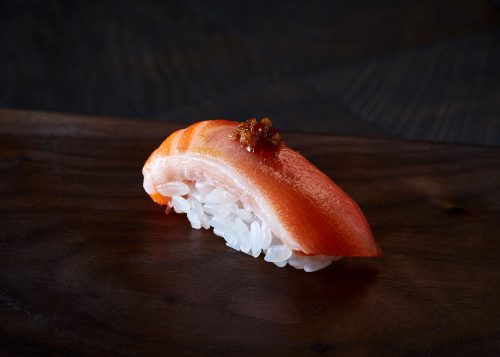
Courses of sashimi and nigiri follow the opening dishes. They vary depending on what’s available at a particular time, but two regulars are the king salmon and the horse mackerel, both nigiri.
Ora king salmon gets a topping of pickled garlic—pickled for upwards of six months. “Letting time pass, it ferments a little bit, really nice.” Even so, he hasn’t found anything else it goes with as well as this lush salmon with its thick stripes of fat—”Salmon has its own character and richness. I tried with other fish—it doesn’t work out. I tried fluke, I tried other white fish—no. Ora king salmon is richer than the Scottish salmon, which has a more clean flavor. I love king salmon, it has a flowery taste, fatty, and the garlic cuts right through it.”
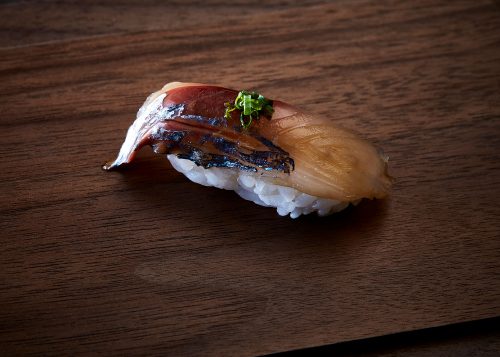
Other varieties of mackerel like blue mackerel often make for a strong and oily flavor in a lower-priced sushi meal, but Park says, “Everybody likes this horse mackerel, because it’s from the family of jack, like amberjack and yellowtail. Real mackerel shouldn’t be fishy, it’s just ocean flavor.” It gets a simple topping of ginger root and chives with house soy.
One thing Park is adamant about is that sashimi and nigiri cuts should not be too big. He’ll probably get Yelp complaints that his nigiri is on the small side, but he says, “How you cut is very, very important. It looks so easy, but it’s not. It has to be one bite, so that in the mouth, you’re chewing the fish and the rice together. Otherwise, if the fish is too thick, you’re going to be chewing and only getting fish flavor.”
3. Chawanmushi
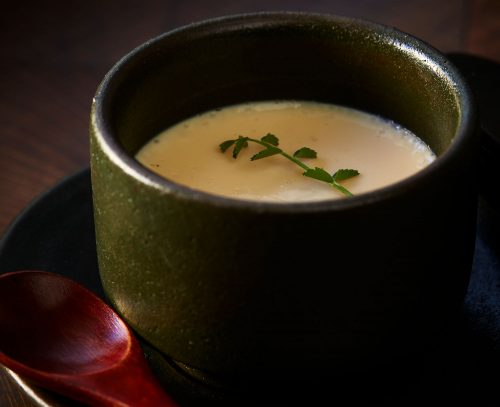
It’s important to Park to integrate cooked dishes into the flow of sushi courses—”When I was growing up, we don’t just eat raw fish. At mealtime, we’d do something like some soup—you know, kaiseki style. So that one dish will make you digest better, feel better.”
Every chef has a different style, but it has to be right. If a Japanese customer comes in, they know, they go, oh my God.
Chawanmushi, a steamed egg custard, is a classic Japanese comfort food dish, homey but at the same time, capable of elegant simplicity. Park makes it into a luxury dish: “A lot of people use a chicken broth or a bonito broth, but I use a mushroom broth, shiitakes, which give it a lot of flavor. I don’t want to put anything [else] in there, because I just want that flavor.” Though he does bury one ingredient deep in the soft, tofu-like custard: crab meat.
Warm and filling, it will probably be retired for the summer and come back with cold weather.
4. Duck
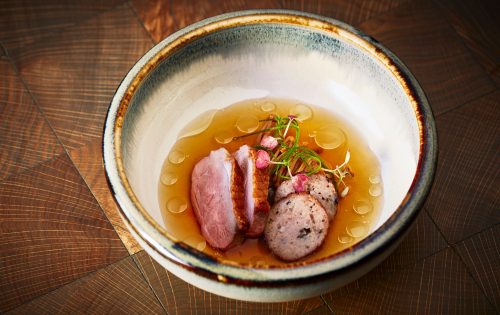
We get to talking about the fact that Americans rarely cook duck themselves—”Some people didn’t grow up with duck. But when they have it, they love it,” he says. His dish combines duck breast and sausage slices in a consommé made from mushrooms, vegetables and bones, braised overnight. “Very similar to ramen broth, but milder than that. Milder than French consommé, and we soak it in ginger and genmai, brown rice. You can drink the consommé, and it makes you calm,” he says. Zen duck.
5. Wagyu/Aka Anago
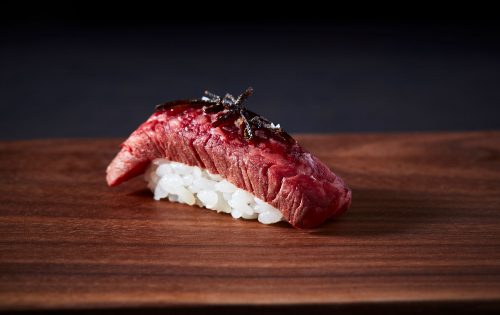
Two cooked nigiri offerings come late in the meal, after the duck. The inevitable wagyu course evolved from the first sample of Miyazaki beef (wagyu from Miyazaki prefecture) he was sent when he started doing omakase at Juno. He grilled it, he did it as tartare, and he settled on searing the outside and serving it almost raw.
At Mako, he sears it and then marinates it in pepper soy—soy, mirin, sake, and pepper—for about five hours. “Not too spicy but the right amount of the pepper cuts through the wagyu richness.” A little dehydrated shio kombu (kelp, marinated in soy, mirin and sugar) goes on top.
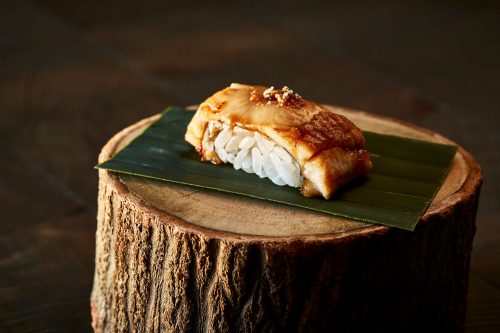
If wagyu wows Americans, it’s the Aka anago, the eel course, that Park seems to take most seriously, as a demonstration of his level of Japanese technique. “The whole piece, you gotta bone, you gotta cut, you gotta clean up, you braise in the sauce. Every chef has a different style, but it has to be right. If a Japanese customer comes in, they know, they go, oh my God. If I go in a Japanese restaurant, I want to taste that, mackerel, and tamago, to see if the chef knows what he’s doing.”
Another dish whose days are numbered—it will probably be replaced by white eel, shira anago, for the summer.
6. Tamago
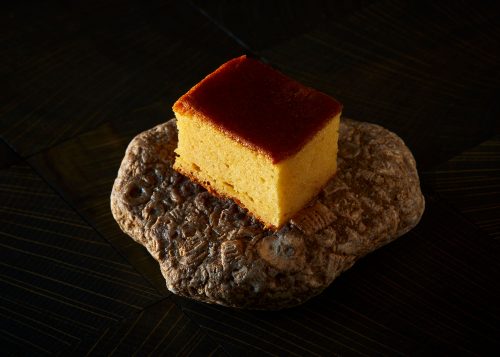
A cube resembling a piece of cornbread, Tamago does not, at first glance, seem like the test case for a Japanese chef’s qualifications. But essentially an omelet in cake form, it serves the same purpose as having a potential hire in a French restaurant make a classic French omelet—if a prospect can do that right, they probably have the other skills of a professional kitchen, too.
Tamago signals the end of savory dishes, a filling, comfortable bite to pave the way to dessert. Park makes his with ground shrimp and ground Japanese yam. “There’s a lot of process,” Park says. Surprisingly, he says the shrimp quality can really throw the cake’s texture off: “If it’s not that good, then it doesn’t come out right. It’s one of the hardest dishes.”
7. Japanese Sweet Potato
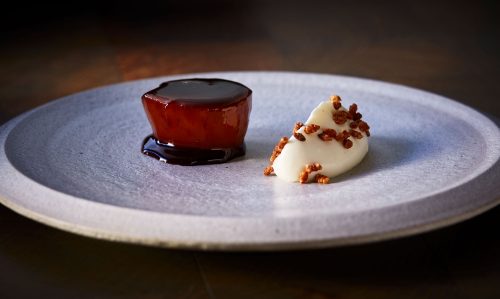
Park offers an Asian pear course as a refreshing, palate-cleansing course, but the final dessert course is one that combines classic, comforting Japanese flavors in an elegant way. A section of Japanese yam, roasted till it’s soft enough to cut with a fork, is served with a Japanese whiskey glaze and a crème diplomate (a classic French pastry cream, popular in Japanese baked sweets) dotted with toasted genmai (brown rice).
“I really love the Japanese sweet potato. I think instead of a cold dessert, I like something a little warm at the end,” Park says. “Here, we drink tea at the start of the meal, but in Japan, they have it at the end, to help you digest the meal. This has a little bit of the same feeling, to make you feel good as you go.”
Michael Gebert is the big chawanmushi of Fooditor.
Cover photo by Michael Gebert
Latest
Join the Discussion
After you comment, click Post. If you're not already logged in you will be asked to log in or register with Disqus.
















